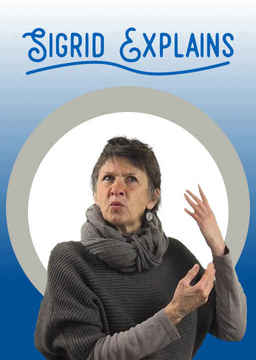









Difficulty:
 Beginner
Beginner
USA
Learn to ask questions about an apartment you might be interested in when looking for a new place to live. Along with some essential vocabulary, we practice the crucial difference between “there is” and there are.”
Difficulty:
 Beginner
Beginner
USA
To get to know a place, you need to know where things are. The best way to do this is just to ask! But it’s not always straightforward, especially when you’re new to the neighborhood and have no points of reference!
Difficulty:
 Beginner
Beginner
USA
The "Side by Side" series always makes learning fun! In this lesson we use photos to learn the names given to close family members and some handy ways to say where these people are. And finally we hear a nostalgic country song from a family man whose photos bring his happy memories to life!
Difficulty:
 Beginner
Beginner
USA
Learn how to say what you and others are doing at this exact moment using the present continuous tense, and meet Dennis, who is having a tough day. Everybody he calls is too busy to speak to him!
Difficulty:
 Beginner
Beginner
USA
This episode of Side by Side is all about the weather and how to talk about it in English. The basic question is, "How is the weather today?"
Difficulty:
 Beginner
Beginner
USA
In this video, you can review subject pronouns, and learn how to ask and talk about where people are around town, whether it be at the library, in the park, or at the hospital.
Difficulty:
 Beginner
Beginner
USA
In the second part of this lesson, Luana goes through the kitchen items we use to serve and eat our food, and explains how and when they are used.
Difficulty:
 Beginner
Beginner
USA
Let's learn the names of various kitchen utensils with Luana! We'll start with the utensils used to prepare and cook food, such as tongs, sifters, graters, knives, cutting boards, pots and pans...
Difficulty:
 Beginner
Beginner
USA
This video will help you learn how to say where you are—and where other people are—in various rooms around the house, such as the attic, dining room, basement, and kitchen.
Difficulty:
 Beginner
Beginner
USA
This up-tempo song from Schoolhouse Rock helps us to understand what a noun is. Generally, it's any person, place, or thing, which the song shows with helpful examples!
Difficulty:
 Beginner
Beginner
Australia, United Kingdom, USA
This video clearly presents some fundamental differences between American English, British English, and Australian English in terms of spelling, pronunciation, and vocabulary.
Difficulty:
 Beginner
Beginner
USA
What expressions are related to the word "line"? We use "line" when talking about the laundry, behavior, or even time.
Difficulty:
 Beginner
Beginner
USA
A square is a shape, of course, but there are plenty of ways we use squares to describe things figuratively. Let's look at some examples of when and how we do this.
Difficulty:
 Beginner
Beginner
USA
We can use dots and circles to describe things figuratively. Sigrid gives us examples with expressions like "connect the dots" and "inner circle."
Difficulty:
 Beginner
Beginner
USA
There are various things we need to do to keep the pool clean and the water circulating. Sigrid describes some of them. It's quite a lot of work, but she thinks that having a pool is still worth it.
Are you sure you want to delete this comment? You will not be able to recover it.